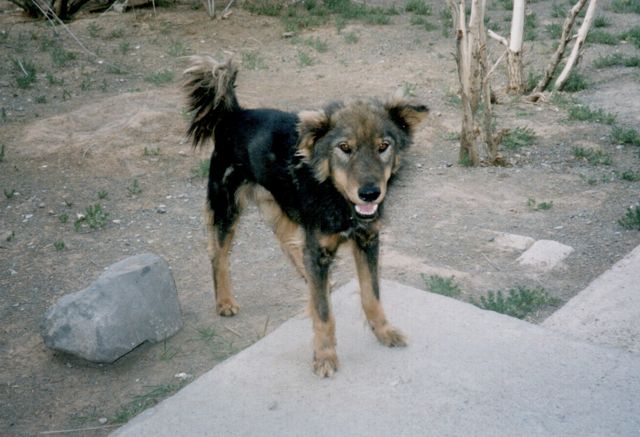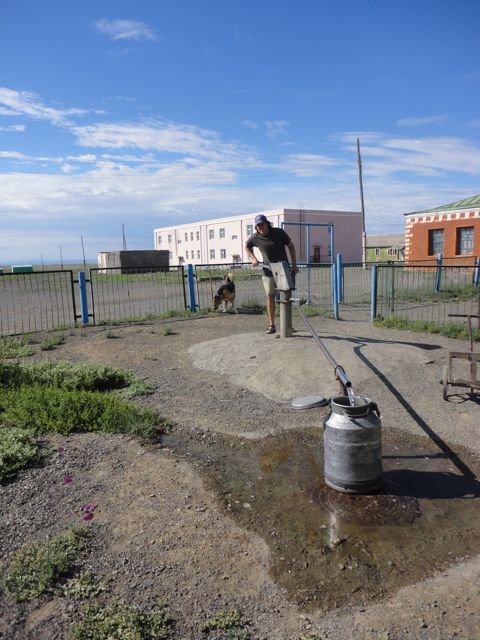A new school year is right around the corner, and I thought it would be a good time to highlight the history of the Hanhongor school. The first school in Hanhongor was established in 1940 somewhat south of present day Hanhongor. Consisting of 3 gers, 2 classrooms, and 1 kitchen, it was initially endowed with donations of 58 camels and 2 cast iron cooking pots from area community leaders.
 The first year there were 25 students, 2 teachers, and 2 workers, and by 1943 there were 65 students and 3 teachers. The first class graduated from 4th grade in 1944, and from there the students went to school in the aimag center for secondary education. In the late 1940s and in 1950 two small classroom buildings were built in Hanhongor proper to house the students more permanently.
The first year there were 25 students, 2 teachers, and 2 workers, and by 1943 there were 65 students and 3 teachers. The first class graduated from 4th grade in 1944, and from there the students went to school in the aimag center for secondary education. In the late 1940s and in 1950 two small classroom buildings were built in Hanhongor proper to house the students more permanently.
 Next in 1958, a stone classroom building with 4 classrooms and two office rooms, was built in the center of Hanhongor followed in 1961 by a “Pioneer building” for all those little Socialists. This was during the time Darhuu was an elementary school student, and she has all sorts of stories about malfunctioning stove flues causing students to pass out in class and how the kids thought that the pioneer building was the real bees knees.
Next in 1958, a stone classroom building with 4 classrooms and two office rooms, was built in the center of Hanhongor followed in 1961 by a “Pioneer building” for all those little Socialists. This was during the time Darhuu was an elementary school student, and she has all sorts of stories about malfunctioning stove flues causing students to pass out in class and how the kids thought that the pioneer building was the real bees knees.
In 1971 Hanhongor was awarded the Best Elementary School in the Nation by the Mongolian government, and in 1978 the school expanded from a four year elementary school to an 8 year middle school with the first 8th grade class of 37 students graduating in 1982. Our present day governor and trash man graduated in this class.
 The present day school building was built in 1988 to accommodate the 320 students of the day (200 of which lived in the school dorms),
The present day school building was built in 1988 to accommodate the 320 students of the day (200 of which lived in the school dorms),
 and in 2000 the aimag educational department designated the Hanhongor school as a Performing Arts magnet school. Today about 1/3 of the students study art, dance, or music in the afternoon, and students come from all the soums in Omnogobi and as far away as Ulaanbaatar to take advantage of the talented music teachers.
and in 2000 the aimag educational department designated the Hanhongor school as a Performing Arts magnet school. Today about 1/3 of the students study art, dance, or music in the afternoon, and students come from all the soums in Omnogobi and as far away as Ulaanbaatar to take advantage of the talented music teachers.
Presently, the number of students in the Hanhongor school hovers around 200, about 1/3 less than 25 years ago, which means that the classes are small, all of classes are held in the morning (instead of morning and afternoon shifts like many schools), and there is a real sense of community. While many of the classrooms are cold (my classroom was in the 40s last January) and not very well supplied, we all try to make the best of it. Thanks to some very hardworking teachers, there is always a sports contest, a club, or other activity going on in the afternoons to improve the lives of the kids-something that is all the more important when you just spent the morning trying to grip your pen with numb fingers.





































